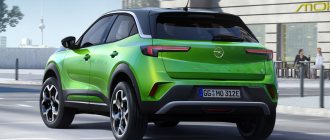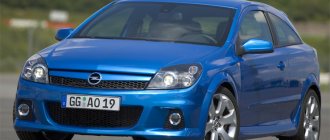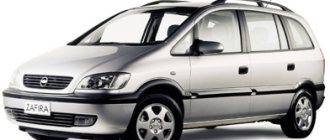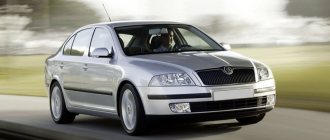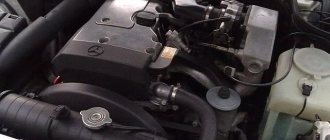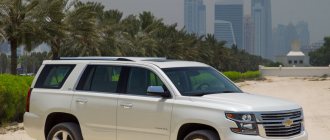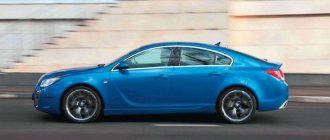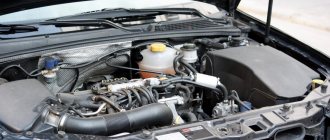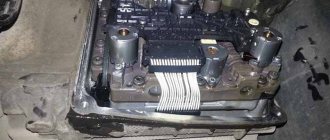Powerful, efficient and smart
- Powerful diesel engine with common-rail fuel supply system and maintenance-free particulate filter
- Refined 3.2-litre V6 petrol crowns the engine range
- Electronically controlled all-wheel drive system with electro-hydraulic differential
Powerful and economical: when it comes to SUVs and crossovers, diesel engines top the list of European buyers' preferences. Opel experts therefore expect the 2.0-litre turbocharged common-rail diesel with a maximum output of 110 kW/150 hp to become a real bestseller. It will be joined by another variant with 93 kW/127 hp within a few months. Both diesel engines are equipped as standard with a maintenance-free particulate filter. The Antara engine range opens with a four-cylinder petrol unit with a displacement of 2.4 liters and a maximum power of 103 kW/140 hp. This engine features two overhead camshafts and a balance shaft with two rotating counterweights. The most powerful of the Antara engine range is the 3.2-litre petrol V6, producing up to 167 kW/227 hp. All of these transverse engines have four valves per cylinder and (in the basic version) are coupled with a five-speed manual transmission. The exception is the V6 engine, which is mated to a newly developed five-speed automatic transmission (other engines offer this transmission as an option). It has an ActiveSelect function, which allows you to change gears manually, and a “winter” gear shift program, which makes it easier to drive on slippery surfaces.
As standard equipment, the Antara is equipped with an intelligent active all-wheel drive system ITCC (Intelligent Torque Controlled Coupling - with an “intelligent” torque-controlled differential). This system allows the Antara to combine the advantages of a front-wheel drive model (such as fuel efficiency and ease of maneuvering) with the advantages of a 4x4 SUV. When driving under normal conditions, the engine torque is transmitted to the front wheels, but if necessary, it can be easily and quickly redistributed between the front and rear axles (in a ratio of 100:0 to 50:50). The main part of the all-wheel drive system is an electro-hydraulic differential with electromagnetic drive and electronic control.
The all-wheel drive system, the parts of which are compact and lightweight, is fully integrated with the ABS and ESP systems. To effectively isolate the body from noise and vibrations that occur during operation of the power unit, the Opel Antara engine is mounted on four effective articulated supports (two on each side). The load from the engine is transferred to the support points lying on the left and right "neutral torque" (NTA) axes. As a result, the impact on the car body of moments of forces arising during engine operation is minimized. This engine mount reduces noise and vibration, especially when idling.
Powerful, economical and clean diesel engines
Relatively high location of the “flat” part of the torque curve, high traction force, durability - and at the same time low fuel consumption. It is not surprising that diesel engines are in such high demand among buyers of SUVs and crossovers. The Opel Antara is also offered with a new 2.0-liter CDTI diesel engine, developing a maximum power of 150 hp. A variant with a maximum power of 127 hp will be added in early 2007. Both diesel engines are equipped with the latest generation common-rail fuel supply system operating under high pressure (up to 1600 bar), as well as an aluminum cylinder head and a variable geometry turbocharger.
Both diesel engines are equipped as standard with a maintenance-free particulate filter that does not require the addition of additives. The exhaust gas filter consists of a durable ceramic housing (with honeycomb-shaped cells) penetrated by microscopic channels. Soot particles settle on the surface of these channels and are regularly burned to prevent the filter from clogging. Instead of using a complex set of fuel additives to remove soot particles from the filter, injection of specially calculated doses of fuel raises the temperature of the diesel engine exhaust gases to 600° Celsius - the temperature at which carbon particles ignite - while the soot is burned in the filter.
The engine at the top of Opel's Antara diesel range can be mated to a five-speed automatic transmission (instead of the base five-speed manual). In both cases, it provides the car with excellent traction and dynamic characteristics. The Antara's acceleration time from 0 to 100 km/h (in fifth gear) is 12.6 seconds (for the version with an automatic transmission - 9.7 seconds). Fuel consumption (measured according to MVEG in the combined driving cycle) is 7.5 l/100 km (for the version with automatic transmission: 8.6 l/100 km). In combination with a 65-liter fuel tank, this increases the vehicle's range (without refueling) to 870 km. The maximum speed of the Antara with a manual transmission is 180 km/h, and with an automatic transmission it is 178 km/h.
The new diesel engine was developed in collaboration between GM Korea and GM Powertrain and is manufactured in Gunsan, South Korea. The plant, covering an area of 19,200 m2, can annually produce up to 250,000 engines, mass production of which began in March 2006.
Antara diesel engines (general information):
| 2.0 CDTI ECOTEC | ||
| Working volume, cm3 | 1991 | 1991 |
| Maximum power, kW/hp (at rotational speed, min-1) | 93/127 at 4000 | 110/150 at 4000 |
| Maximum torque, Nm (at rotational speed, min-1) | 295 at 1800 | 320 at 2000 |
| Maximum speed, km/h | 166 | 180 (178) |
| Acceleration time from 0 to 100 km/h, s | 13,8 | 10,3 (12,1) |
| Fuel consumption according to MVEG, l/100 km | 7,6 | 7,5 (8,6) |
(Data in italics are for vehicles with automatic transmission)
Petrol engines: refined and efficient
Along with two diesel engines, the Antara is offered with two sophisticated petrol engines from the ECOTEC family. The base 2.4-litre four-cylinder engine produces a maximum output of 103 kW/140 hp. It is characterized by a long piston stroke: the cylinder diameter/piston stroke values are respectively 87.5/100 mm. This engine features dual overhead camshafts, a balance shaft with two rotating counterweights, and an electronic throttle control system. The more powerful 3.2-litre V6 engine produces 167 kW/227 hp. The Opel Antara with a 2.4-liter gasoline engine has a top speed of 175 km/h, acceleration time from 0 to 100 km/h is 11.9 seconds, and fuel consumption (according to MVEG for the combined cycle) is 9.6 l/ 100 km.
The most powerful petrol engine, the 3.2-litre V6 unit, produces 167 kW/227 hp. In the basic version, this six-cylinder engine is mated to a five-speed automatic transmission with ActiveSelect function. The maximum speed of the Antara equipped with this engine (which shares many similarities with the 2.8-liter V6 ECOTEC found in the Vectra and Signum) is 203 km/h. The engine design includes such high-tech components as a mechanism for changing valve timing (intake and exhaust valves), as well as an intake manifold with variable path length.
The cutting-edge gasoline engine with aluminum alloy housings belongs to the V6 engine family, developed in close collaboration between American engineers from GM Powertrain and their colleagues from Europe and Australia. Along with six-cylinder naturally aspirated engines with a displacement of 2.8 - 3.6 liters, this engineering alliance has also developed a turbocharged engine that can be installed on the Vectra and Signum models.
In addition to Opel models (Vectra, Signum and Antara), these engines, which provide the car with high dynamic performance and fuel efficiency, are also used on models of other GM brands. These are, for example, the Cadillac CTS, some Buick cars (manufactured in the USA), the Saab 9-3 Aero, as well as many Holden models. In all cases, the engines are carefully infused to meet the specific requirements of each brand.
Global cooperation in the development and production of these engines allows up to 90% of identical parts to be used in their design. To ensure that the engines can be used throughout the world, they are designed to take into account the varied requirements of markets in different countries. For example, engines are equipped with variable valve timing to provide optimal power output and emissions for most road and climate conditions. GM's intelligent core design for the new V6 engine lineup further demonstrates its versatility and global applicability. It allows the engine to be mounted in both transverse and longitudinal positions and fuel supply options such as direct injection, manifold injection or turbocharging. In general, the characteristics of modern six-cylinder engines are in the following range: maximum power - 203-320 hp; maximum torque - 267-485 Nm.
Other features common to 24-valve engines:
- classic cylinder block camber angle - 60 degrees,
- two overhead camshafts driven by two chains,
- forged alloy steel crankshaft with four support bearings,
- connecting rods made using powder metallurgy technology,
- exhaust valves filled with sodium for better cooling,
- rigid cast iron oil pan.
Used Opel Antara: V6 is bad, but automatic transmission is even worse
Transmission
The bulk of the Opel Antara is all-wheel drive, with an electromagnetic clutch for connecting the rear axle.
The solution, in general, is simple and quite reliable, but not very effective. The mechanical part of the transmission of front-wheel drive cars is completely reliable. CV joints can last for 200 thousand, and usually their resource is limited by the condition of the anthers. The shafts have no problems at all, and there is nothing else to break.
For all-wheel drive vehicles, an angular gearbox, a driveshaft and a rear gearbox with a clutch are added. This is where there is more trouble.
Opel Antara '2006–10
The angular gearbox is reliable. If you change the oil at least once every 60 thousand and monitor for leaks, it will serve well even with three-liter engines. The driveshaft cannot boast of being completely problem-free: the resource is limited mainly by the condition of the outboard bearing, but the crosspieces are also not eternal. They last a little longer than the bearing and are usually replaced as a set. On average, even for those who like to “push the slipper,” the driveshaft can withstand 130-150 thousand kilometers without problems - less often, vibrations appear earlier, and mileages above 250 thousand without repairing it are hardly possible at all. Crosspieces of dimensions 71.40-24.06/74.5-24.0 are inexpensive, the suspension bearing is successfully selected from BMW. It comes up with minimal modifications, but is of fairly high quality. There are also options specifically for GM, but from lesser-known brands. The original cardan is also on sale, but at a price of 50 thousand rubles, few people replace it in its entirety.
Articles / Used car Opel Antara with mileage: the leather will say everything, but the suspension will remain silent Opel in Russia is associated with anything, but not a crossover. And not everyone will immediately remember what Antara is... But in vain, by the way. The car, in general, is not bad, although not entirely dumb... 25444 4 0 12/26/2018
The life of the driveshaft greatly depends on the condition of the two silent blocks of the rear gearbox suspension. The rear gearbox itself is quite reliable, the drives are also strong, although they have a shorter service life than the front ones. For those who like to ride on hills and mud, they can fail at a mileage of just over a hundred thousand.
The rear axle breather gets dirty easily and naturally, after which the axle begins to sweat, slowly squeezing out the seals and seal rings of the side covers.
The main headache of the transmission is the clutch and its control system. The control unit is located directly on the rear gear housing, from the top at the rear, and is connected to the coupling by a power cable. Failure of connectors and damage to the control unit itself are quite common phenomena, but not too widespread. But the number of other system failures is very large.
Let's start with the fact that most of the machines produced in Russia have not undergone the coupling preparation procedure, the so-called ranking. There is a code on the clutch connector on the control unit that must be written into the “brains” of the control unit so that the clutch is adequately used for all possible torque off-road. The maximum torque of the clutch can be even more than 2,000 Nm, but in most machines and couplings it is limited to 800 or 1,000 Nm. Of course, this is not the torque of the engine, but a moment that takes into account the gearbox ratio. So it will not be possible to transfer all the torque to the rear axle in the first gears even with the weakest engine. Without ranking, the moment and response time are set to minimum, which affects cross-country ability.
Failures of the ESP system, sensor failures, breakdowns of the clutch itself and errors hanging in the memory of the control unit can easily make the car front-wheel drive. Moreover, the owner finds out about this only after the front wheels are buried in a snowdrift. The system is in no hurry to warn about the clutch disconnection and torque limitation. Especially if the control unit simply does not get in touch.
Checking the clutch is quite simple: when reversing, the rear wheels are always connected, and if they do not slip, then the clutch does not work.
Opel Antara '2010–15
On cars after restyling, the clutch control software was seriously changed: it is preventively blocked when there is a large demand for engine thrust, and not only when slipping of the front axle has already been identified, and in general the system has made it possible to significantly improve cross-country ability without major changes to the transmission hardware.
The clutch itself is reliable, and it can be broken mainly by “swimming” in water, vibrations from the driveshaft, or regular off-road “rides” with long slips. Overheating of the unit leads to failure of the shank oil seal, and this, in turn, leads to oil leakage, damage to the shank bearing, contamination of the oil inside the clutch and increased wear of the clutches. It’s good that during urban exploitation, so much evil practically does not occur at once. However, the clutch itself is inexpensive, a standard electromagnetic BW with the inclusion of the main clutches through a cam mechanism with an auxiliary controlled clutch.
Gearboxes
Gearboxes are represented by two manual transmission options (five-speed D33 and six-speed F40) and three automatic transmissions (Aisin AW55-51 on pre-restyling cars, GM 6T40 and GM 6T45 - after restyling).
The six-speed F40 is characterized by high survivability and reliability. With mileage over 200 thousand and rare oil changes, bearings and synchronizers can die the death of the brave; with powerful engines, the differential can also die. And that is all. In extreme cases, the cost of a contract box is low, fortunately there are still enough live boxes.
The main headache for the owner of a car with such a manual transmission is the life of the dual-mass flywheel. It is limited to 150-200 thousand mileage, and operation with a slipping clutch kills it almost instantly. For “light tuning,” you can find a custom flywheel from Bryce for a regular damper clutch, but with a stock engine, it makes sense to simply repair the flywheel in time, without waiting for it to destroy the gearbox housing and starter.
The D33 five-speed manual transmission was used in combination with a pre-restyling 2.4-liter gasoline engine and with younger versions of two-liter diesel engines. This is the Korean version of the Getrag F23 gearbox, which was widely used on European Opel. True, the quality of its execution leaves much to be desired. The Korean version of this gearbox had complaints about howling and noise from the very beginning; moreover, due to the wear of the synchronizers of the second and third gears, fast shifts become impossible after a hundred thousand miles. The gearbox is not ideal, but the clutch is ordinary, the flywheel is cheap, and everything is inexpensive to repair. It is quite suitable for sedate movement.
Opel Antara '2010–15
A lot of warm words have already been written about the Aisin automatic transmission. The AW 55-51 series boxes are an “added and improved” version of the 55-50 box, and they are free of childhood diseases. A characteristic feature of this series is the high sensitivity of the valve body to oil contamination and wear of the valve body plate. Fixing this fault is very difficult and expensive, and spare parts only contain the valve body assembly. However, it is not difficult to find non-original solenoids and Sonnax repair kits for it, the only question is the quality of the hydraulic repair.
The mechanical part is successful and reliable. The only pity is that very often the maintenance schedule does not include mandatory oil changes. And for this automatic transmission this is extremely important, and it is better to do this more often than the standard 60 thousand kilometers. It is even better to provide external filtration and good cooling.
The box is characterized by a low resource of the gas turbine engine blocking lining. It is single and does not like frequent use. If critical wear of the linings is missed, the adhesive layer wears out and heavily contaminates the valve body with wear products.
How long the overlays will last is a big question. In the average driver's car, they last up to 200-250 thousand kilometers, but “racers” can kill them even after a hundred thousand kilometers.
The box has proven itself well in Opel and Volvo cars, but with age it became clear that its service life is highly dependent on the quality of service. In addition, replacing the valve body assembly with an original one costs more than 80 thousand rubles, so few people decide to do this. “Piece” repairs usually do not solve problems, but only slightly delay the time for a full and expensive restoration.
The GM 6T40/6T45 series automatic transmissions turned out to be a real nightmare for owners. I will not repeat what I said about these automatic transmissions in the Chevrolet Epica review. I will only note that on a heavier crossover, mechanical failures occurred much more often than on a regular sedan. A rare Antara with a mileage of more than 60 thousand kilometers did without gearbox repairs, and quite expensive ones at that.
Here you need to be wary of the appearance of a “trolleybus” sound, which indicates problems with wear of the planetary gears or differential, impacts when switching ranges (wear of the chain or valve body), delayed shifting of 4-5 gears (problem with the 4-5-6 drum or wear of the valve body plate ). Almost all boxes have received an updated set of solenoids, many have been repaired more than once. But even with all the improvements, the electronics put a lot of stress on the mechanical part of the automatic transmission, and for those who like to drive, the wear will always be significant.
Owners of cars with 2.4-liter engines often do not change the rear planetary gear during repairs, but limit themselves to the “collective farm” method of capping the satellite axles. Make sure that the box is repaired normally - by rebuilding it and replacing the spacer washers.
The automatic transmission is extremely sensitive to oil contamination and its temperature. And as a result, a car with this automatic transmission, even with careful maintenance and modernization with the installation of an external oil filter and a large automatic transmission radiator, lags behind Aisin in reliability. When choosing a car after restyling, there is no alternative, but try to take the most recent car possible, with the latest version of the box and control software. Boxes on cars manufactured after 2014 have become much more reliable, there are practically no early failures, but the bulk of cars have barely crossed the critical threshold of 60 thousand kilometers.
Motors
The main engines of the Opel Antara are 2.4-liter inline fours, from two completely different families. There are quite a lot of cars with 3.2-liter engines, and there are significantly fewer cars with a more powerful three-liter engine. There are more diesel cars after restyling, with a 2.2-liter engine, but pre-restyling two-liter diesel engines are rare. It was not possible to find a car with a 3.6 liter engine for sale in Russia, but they can be found. Most often this is the result of a “swap” instead of a 3.2 liter engine, which is expensive to repair. And there are a lot of 3.6-liter engines, so sometimes it’s easier to order a “contract” unit from the USA.
There are not many common problems with motors. I would like to point out the caps of the expansion tanks, which should be changed every few years and screwed in correctly, not all the way, so as not to pinch the valve (otherwise the system will not vent when filling). The alternator overrunning clutch and the crankshaft pulley are also not the most reliable elements, but you just need to keep an eye on them. Heater valves that are more than 10 years old do not respond well to increased pressure in the cooling system and can suddenly leak.
Under the hood of Opel Antara '2010–15
Before restyling, the 2.4 liter engines of the Z24XE series were repeatedly criticized for their low power and old-fashioned design. Of course, the cast-iron cylinder block of this engine is essentially the same as on Opel cars of the 70s. Of course, it has become lighter, and the working volume is no longer 1.6, but 2.4 liters. And the cylinder head and attachments here are almost the same as on the 1994 X20XEV engine. By the way, the power of this two-liter engine is the same 136 hp: they clearly did not chase the degree of boost, the engine was deliberately made “low-level” and high-torque. But it is extremely simple in design, very cheap to repair, and its service life of 350, or even 500 thousand kilometers speaks for itself. Flaws? Of course they are.
Opel Antara '2006–10
The crankcase ventilation system is weak, and the cylinder head cover is plastic. Of course, it flows like a stream at the slightest overheating, especially on older engines, on engines with a worn piston or simply with clogged and broken tubes.
The exhaust manifold can crack: the large cast structure does not have temperature-compensating fasteners, and its shape is poor. The intake manifold becomes actively contaminated, and due to carbon deposits on the intake, the geometry changing system fails.
Timing kit, 2.4 A24XE
price for non-original
Uxclent 6,726 rubles
The timing belt resource is average - 60 thousand kilometers. When replacing it, it is better to replace the pump as well: it is driven by the timing belt, with its inner ribbed side, and if it jams, the belt will definitely break.
Everything is paid off by the low price of components, proven design and long-known methods of treating problems. In general, do not neglect cars before restyling, they have their advantages. At least the cost of operation will be low. Although there will definitely not be any savings on fuel: even with a manual transmission, consumption of 15 liters in the city is guaranteed.
The 3.2-liter V6 engines of the Z32SE series before restyling and the three-liter A30XH/A30HF series belong to the line of GM High Feature engines, widely represented in American and European cars. Please note that the Z32SE designation also has engines of a completely different series, with a timing belt, which were installed on the Opel Vectra C for some time. The GM High Feature family is made in an aluminum block, with cast iron liners and a timing chain.
Opel Antara '2006–10
3.2-liter engines are slightly simpler in design than three-liter engines: they do not have timing adjustment and simple distributed injection. Three-liter engines have noticeably higher power due to the use of a phase control system and direct injection. Despite the general similarity of design and belonging to the same series, the motors have almost no identical parts. The service life of engines of this family is quite long, often over 300 thousand kilometers, but, unfortunately, they are expensive to maintain, have many large wear parts and maintenance nuances after a mileage of 150-180 thousand kilometers. And the more complex the motor, the higher the cost of repairs.
Timing chain, 2.4 A24XE
price for non-original
9,080 rubles
Obvious disadvantages include sensitivity to temperature and ease of overheating. Very high thermal load places high demands on the quality of operation of the entire cooling system. The rings become stuck at the slightest overheating, and this situation is complicated by the accompanying numerous oil leaks. In addition, there is a complex timing structure with three chains in the drive, and a pack of dampers and tensioners. One of the advantages we can only note is quiet operation with low mileage.
But in repair and operation, these motors are a real punishment. First of all, this is a problem with the timing life, which varies widely. Often chains begin to knock at mileage less than 60 thousand, and there is no point in delaying replacement - they skip easily. Or they can serve more than two hundred thousand, depending on your luck.
The share of “luck” can be increased: a slightly increased oil level, replacement interval - once every 10 thousand. And it’s better not to fill with GM oil, but with something better.
Usually, replacing the timing belt results in a complete overhaul of the engine, since for high-quality performance it will require its removal from the car.
Opel Antara '2006–10
The second significant nuance is the price of timing belt repair. The original set or Cloyes are very expensive: only the main chains cost more than 40 thousand rubles, and this does not include stabilizers and tensioners. All together, just in terms of details, it amounts to a round sum. In addition, the lower damper and tensioner are tied to the oil pump body, and the damper is not supplied separately, and the tensioner will have to be replaced with a new type part, so that’s even more than 40 thousand for hardware alone. With the work, the prices are quite Mercedes. Well, or you will have to sacrifice quality. In addition, when reassembling, there is a high probability of error: the design is replete with “original” solutions in the form of strange fastener sealing schemes, complex sealant application schemes, an interesting pump design and the front cover as a whole.
In general, engines of this series are clearly made with the expectation of a five-year lease and a hundred thousand miles, after which it is better to immediately drag them to a landfill.
In addition, these motors have a bunch of other, smaller breakdowns. Catalysts crumble quite quickly, the intake requires replacing rings, and the piston group also wears out. And for three-liter engines, you still need to clean the valves from carbon deposits, regularly change the fuel injection pump and with special zeal monitor the cleanliness of the gas tank and fuel system.
Under the hood of Opel Antara '2010–15
The appetite, despite all the innovation, of the engines in this series is not childish. In city mode, it easily goes over 20 liters, so it’s not possible to justify all the problems with high performance characteristics. They provide decent dynamics, but that’s where their advantages end. In general, the engines are for those who like dynamics and traction with a big wallet. But this is clearly not the audience for the Opel brand.
The 2.4 engines after restyling are the A24XE/A24XF engines, also of American origin, with quite high power and more modern. The design is quite progressive: aluminum block, cast iron liners, timing chain, phase shifters, pump drive from the camshaft. All this with the extensive use of “recycled” aluminum. All this is surprisingly efficient, easy to repair, and even the service life of these motors is only slightly less than that of the old “cast iron”. Moreover, there is practically no wear on the liners, as well as repair sizes.
Opel Antara '2006–10
The downside of the “progressive” design is the unreasonably high price of the timing belt and almost all other parts, a weak cylinder block, and high requirements for compliance with the tightening torques of not only the cylinder head bolts and timing fasteners, but also the spark plugs. The phase control mechanism constantly suffers from “failures” of varying severity. With higher power on paper, in real operation the difference in the dynamics of the two generations of engines turns out to be small, and the advantage in fuel consumption, even taking into account the new gearbox, is only about a liter per hundred kilometers.
In general, the main advantage of the novelty of the A24XE/A24XF engines lies precisely in the novelty: cars with these engines are newer, and with low mileage there is less hassle with them. But if the mileage exceeds 150 thousand, then the advantages turn into disadvantages.
conclusions
Of course, Antara has its advantages: nice design, interior quality, comfort, excellent chassis, corrosion-resistant body. And most engines are quite reliable with mileages of up to 150 thousand kilometers. But with a V6, the car becomes unreasonably expensive to operate, and with a 2.4-liter engine after restyling, repair costs are generally difficult to predict. The situation is even worse with the automatic transmission after restyling. There are two options here: either abandon the automatic transmission completely, or look for the most “fresh” car... and still be ready to repair the transmission.
Opel Antara '2010–15
Yes, with simple engines and gearboxes, the Opel Antara was not the worst car in its class. But, unfortunately, the course GM has taken to increase the cost of ownership now, when the mileage of even restyled cars is approaching one hundred thousand, makes buying an Antara a dubious pleasure. Owners are in no hurry to invest in a car without an image, and most of the copies have already been used.
Survey
Would you buy an Opel Antara?
Your voice
Total votes:
Antara gasoline engines (general information):
| Gas engine | 2.4 ECOTEC | 3.2 V6 ECOTEC* |
| Working volume, cm3 | 2405 | 3195 |
| Maximum power, kW/hp (at rotational speed, min-1) | 103/140 at 5200 | 167/227 at 6600 |
| Maximum torque, Nm (at rotational speed, min-1) | 220 at 2400 | 297 at 3200 |
| Maximum speed, km/h | 175 | 203 |
| Acceleration time from 0 to 100 km/h, s | 11,9 | 8,8 |
| Fuel consumption according to MVEG, l/100 km | 9,6 | 11,6 |
* with automatic transmission
Gearboxes for easy shifting and high efficiency
At launch, the Antara is offered with a new five-speed manual transmission. This compact three-shaft gearbox can transmit torque up to 330 Nm. It provides exceptionally smooth and silent gear shifting thanks to the use of carbon fiber in the synchronizer design. The entry-level petrol engine with a displacement of 2.4 liters can only be combined with this gearbox.
Diesel 2.0 CDTI with 150 hp. can also be coupled with a new five-speed automatic transmission, which is capable of transmitting torque up to 330 Nm. Including hydraulic fluid, this compact gearbox weighs just 91 kg. The 3.2-liter V6 petrol engine is combined with this gearbox as standard.
